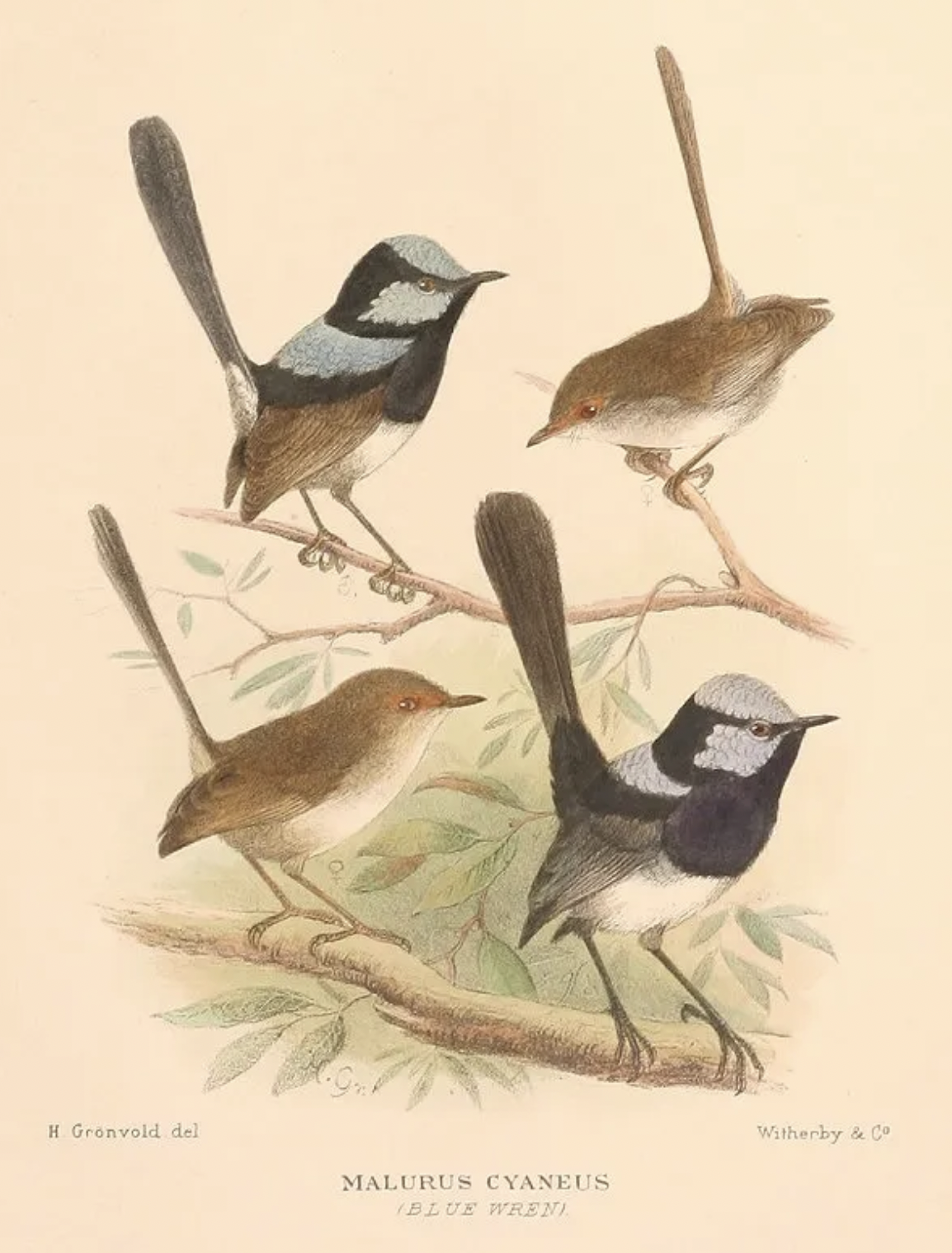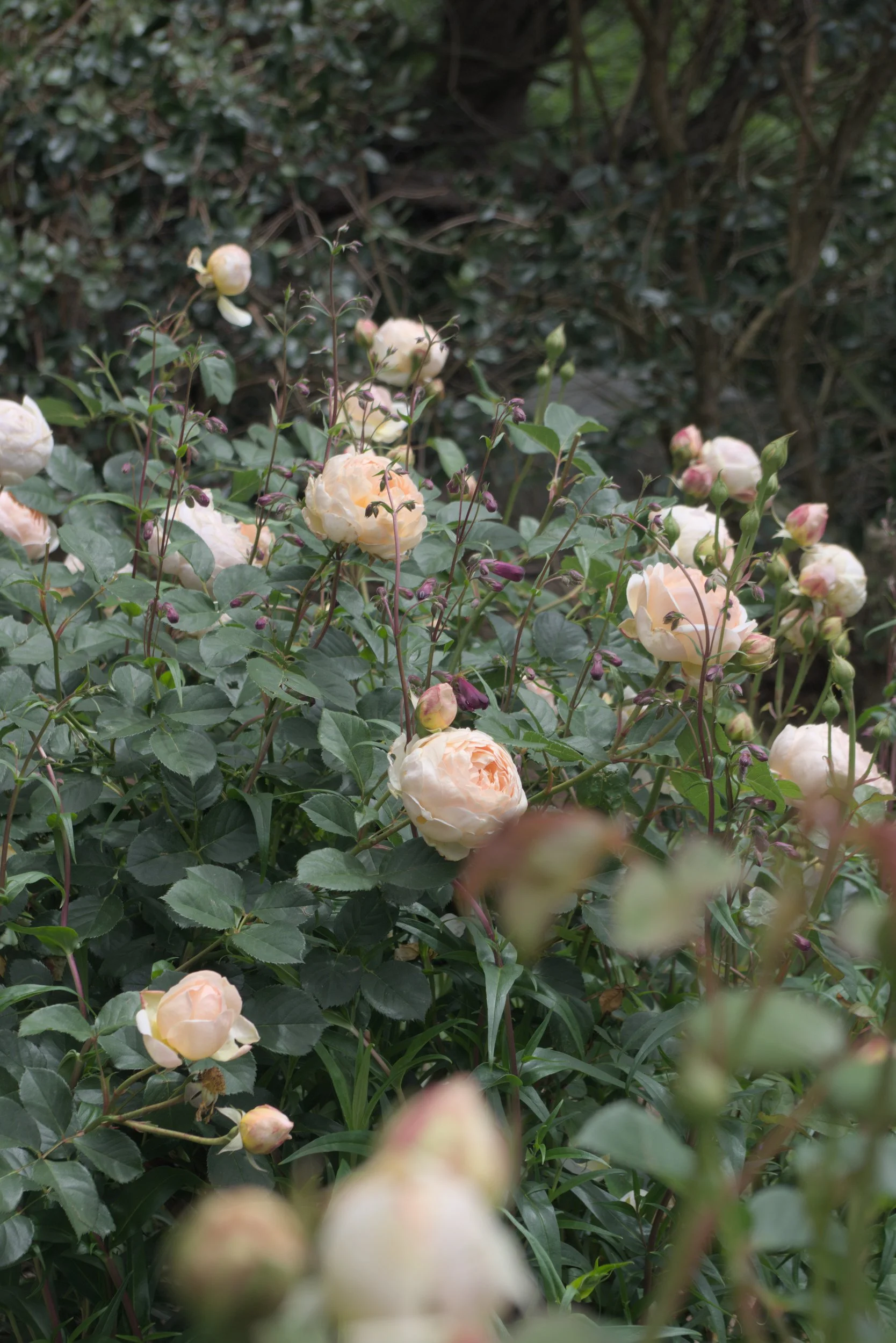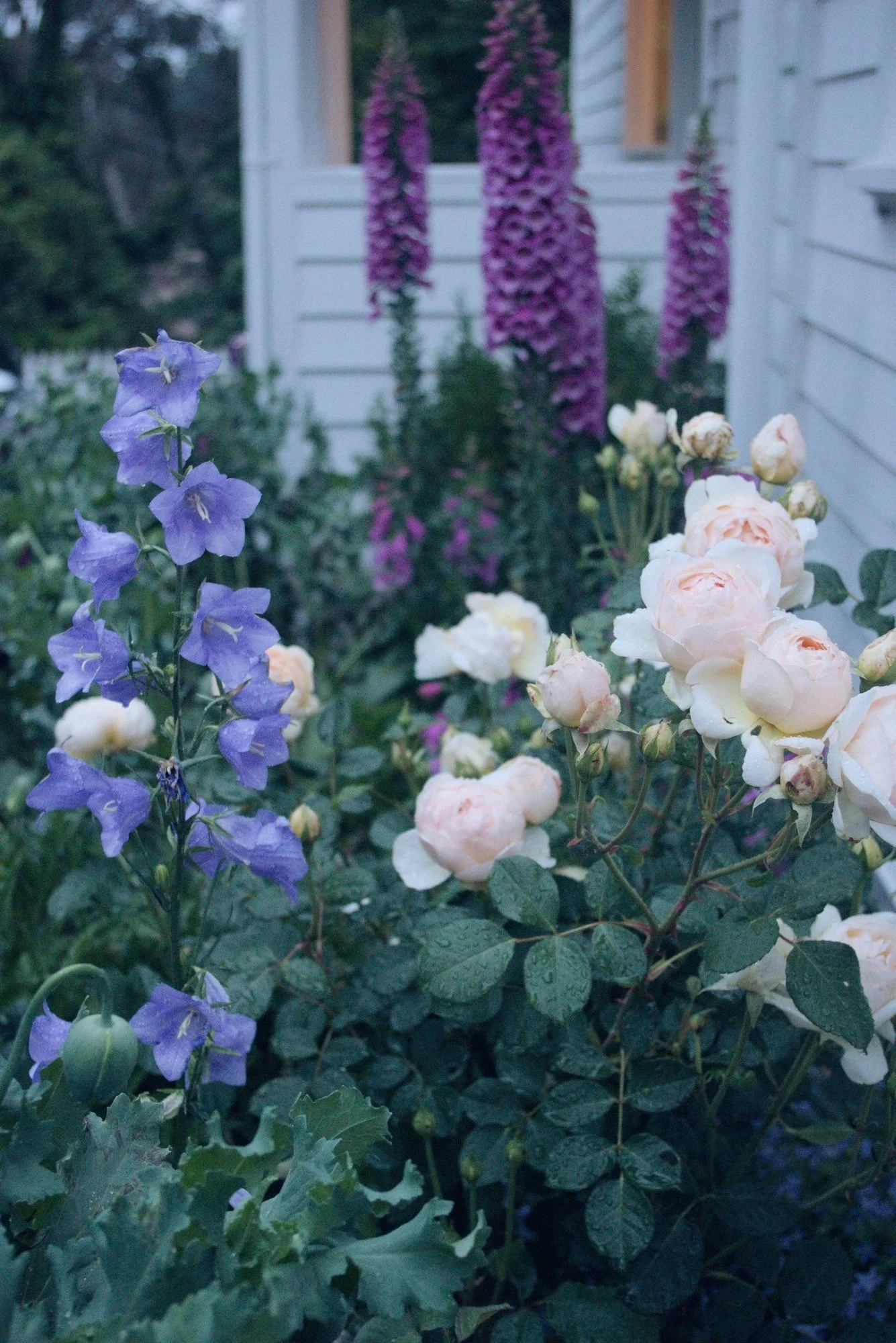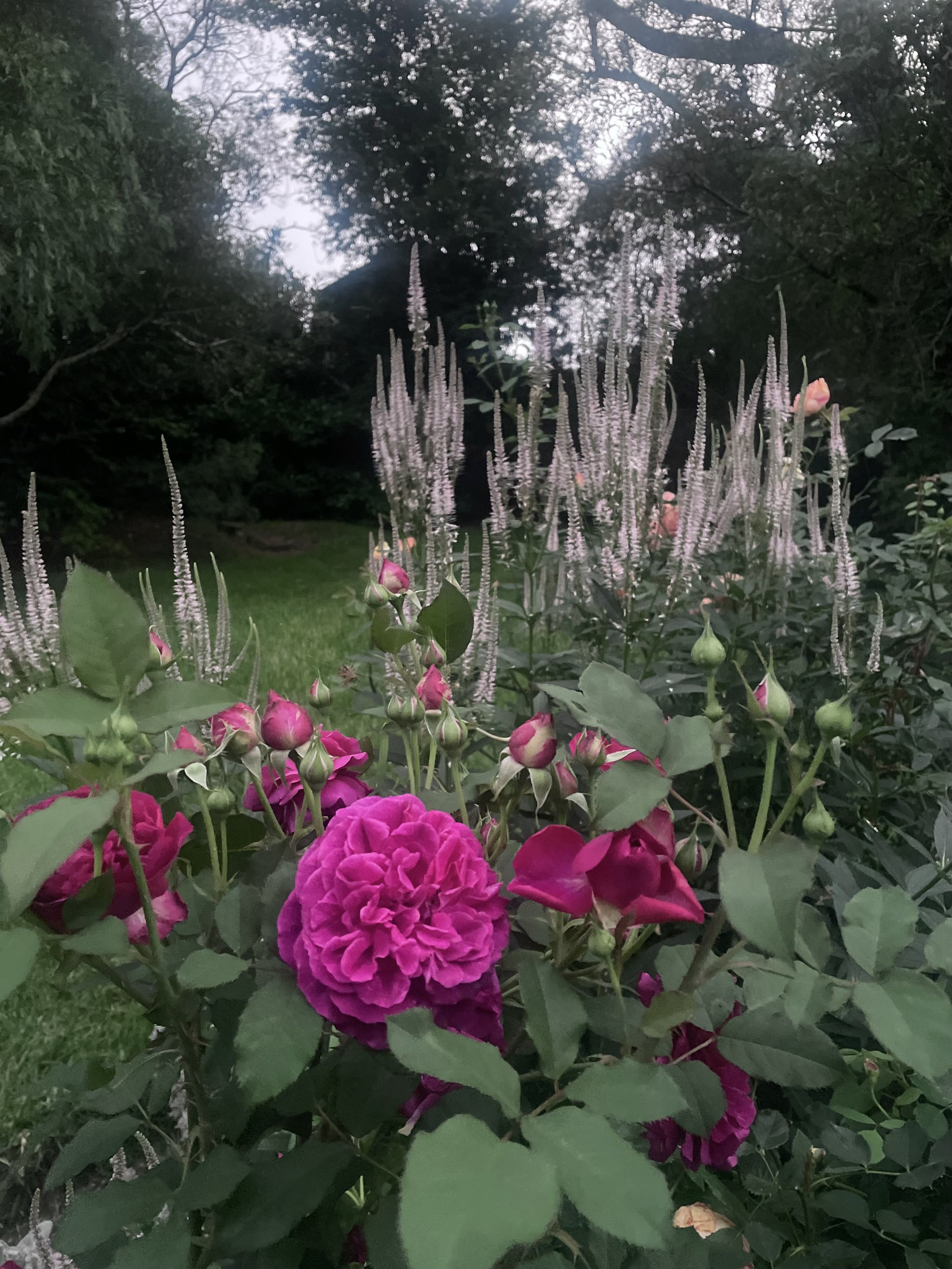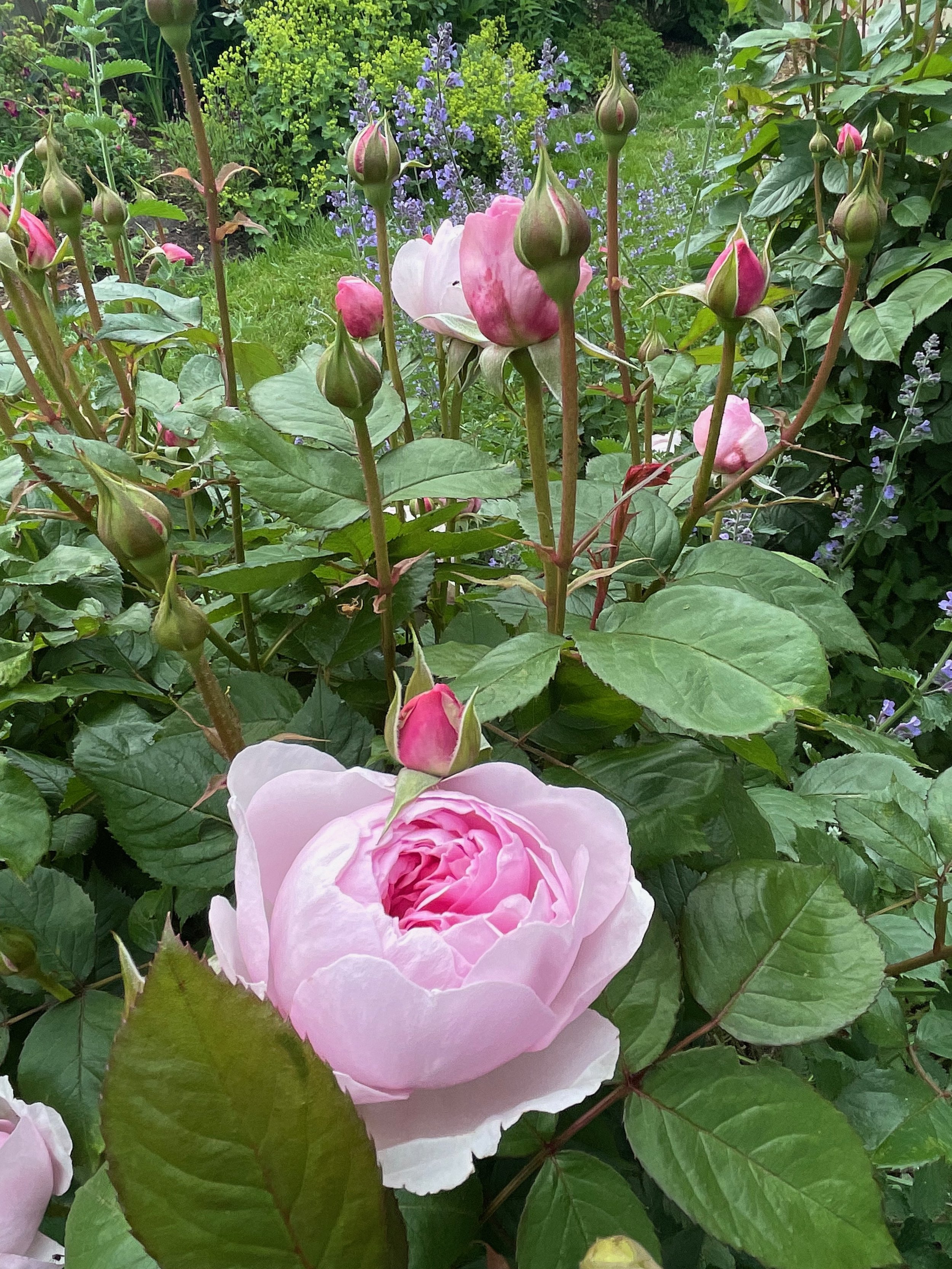Replace lawn with diverse shrubs and plants.
Of course you can have some lawn, but perhaps you don’t need all of it? Digging up the lawn (or lasagna gardening to replace it) also means less mowing, so hopefully more time sitting in the garden watching the birds, or sipping on a cool drink nestled in beside your new flowering shrubs, instead of pushing around the mower in the heat of summer.
Replace the lawn monoculture with a real variety of plants. Think in terms of diverse plant families to support a diverse ecosystem of insect and bird life. Lots of little birds love the nectar that the Lamiaceae family (the mint family) provides (Salvias, lavender, rosemary etc.) The rutaceae family (citrus family) supports a diverse collection of butterfly larvae, with Boronia, Correas, Croweas or in exotics lemon or lime trees and Choisya and Murraya. Include some native grasses for seed eating small birds like Red Browed finches. Non-invasive exotic grasses are usually OK to plant because they don’t produce viable seed or seed is greatly reduced, so I don’t believe they would provide much in the way of food to little birds.
I also notice the little birds such as Superb Fairy Wrens and Eastern Spinebills love to perch on the branches of small trees to sing- a favourite is my Cercis canadensis ‘Forest Pansy.’ Perhaps its branches are just the right height as a platform? You want a garden with a diversity of layers - instead of a single layer like bedding plants, think small understory trees, tall shrubs, small shrubs, herbaceous perennials and grasses and bulbs.
Nectar and Seed Sources
Nectar eaters like Eastern Spinebills love plants with tubular or bell shaped flowers including foxgloves, Agastache, Correas, Kangaroo Paws, Penstemon cultivars, (favourites of mine are Purple Bedder and Alice Hindley). Planting Salvias that flower across different seasons are sure ways to attract small birds, such as Salvia ‘Meighan’s Magic’ and Salvia leucantha cultivars.
Prioritise small flowers over very showy hybrid callistemons and grevilleas that often attract birds such as noisy miners instead of small birds.
Male Superb Fair Wrens hold yellow petals in their mouths (to offset their blue plumage one assumes) as part of their courtship display, so having some bright yellow flowers might help attract them to your garden.
Native species that harmonise very well with cottage garden style and exotic perennials
Indigofera australis
Brachyscome
Correas
Crowea
Philotheca myoropoides
Seed Sources
Native Grasses such as Poa labillardieri, Poa poiformis, Microlaena stipoides
Acacias (ensure they are acacias endemic to our local area) In the Blue Mountains around Blackheath species such as Acacia terminalis, Acacia elata.
A list of some exotic plants that attract small birds
Aquilegia
Agastache
Penstemon
Digitalis (Foxgloves)
Monarda
Lupin
Heuchera
Lavendula spp.
Salvia cvs. such as ‘Meighan’s Magic’ S. Leucantha cvs. S.guaranatica cvs. etc
Don’t plant noxious or environmental weeds
I have seem some bird attracting guides online that recommend plants like Cotoneaster and Cherry Laurel and even Lantana. While it may be tempting to plant species like these because their fruit is enjoyed by birds, because these noxious weeds are spread by birds and can invade natural areas it is vitally important that these plants are not planted.
Invasive species you should avoid:
Buddleja davidii, Cytisus (Brooms), Blackberry, Berberis, Holly, Lantana, Ligustrum spp. (Privet), Prunus laurocerasus (Cherry Laurel)
Check with your local council - they should have a noxious weed list for your local area and make sure to avoid planting these species. Even native plants can be weeds when they are planted in areas the are not endemic to, such as the Cootamundra Wattle.
Of course, if you plant exotic species, control their spread (with judicious deadheading, not allowing them to go to seed) to make sure they do not escape your garden.
An important note on removing large weedy areas from your garden. If your garden is very weedy and overgrown it may seem like the best thing to do is to hack into this as soon as possible and replace it. However weedy thickets are often spots that small birds may be nesting and finding shelter. So for our little bird friends the best thing to do would be to establish some other non-weedy habitat for them first, observe them using it before you clear thickets of privet and honeysuckle etc.
Bird Baths
Cleaned and filled with fresh water daily and ideally elevated so that that birds feel safe away from cats and dogs. I see little birds and bigger birds alike enjoying our birds baths. I also have a low bird bath on the ground that little white-browed Scrubwrens like to shimmy and twirl around the rim of - I assume in some kind of mating dance. It is important to place rocks in the baths that jut out above the water to ensure that little birds can easily get out if they fall in the water. I find that little birds really like to perch on these too.
BIRDS WHO FREQUENT OUR GARDEN
I have a few very blurry photos of the little birds in our garden, but mostly I do not try to photograph them, but just enjoy watching them. Apologies for the lack of accompanying bird photos!
Little Guys
Silver Eyes
Eastern Spinebill
White-throated Treecreeper
Eastern Whipbird
White Browed Scrubwren
Superb Fairy Wren
Eastern Yellow Robin
Red-Whiskered Bulbul
Brown Thornbill
Striated Thornbill
Big Guys
Crimson Rosella
Sulpher Crested Cockatoo
Satin Bower bird
King Parrot
Red Wattle bird
Kookaburra
Lewin’s Honeyeater
Eastern Koel
Wonga Pigeon
Brown Cuckoo-Dove
Gang Gang
Magpies
Pied Curawong
We also often hear the Boobook at night.


